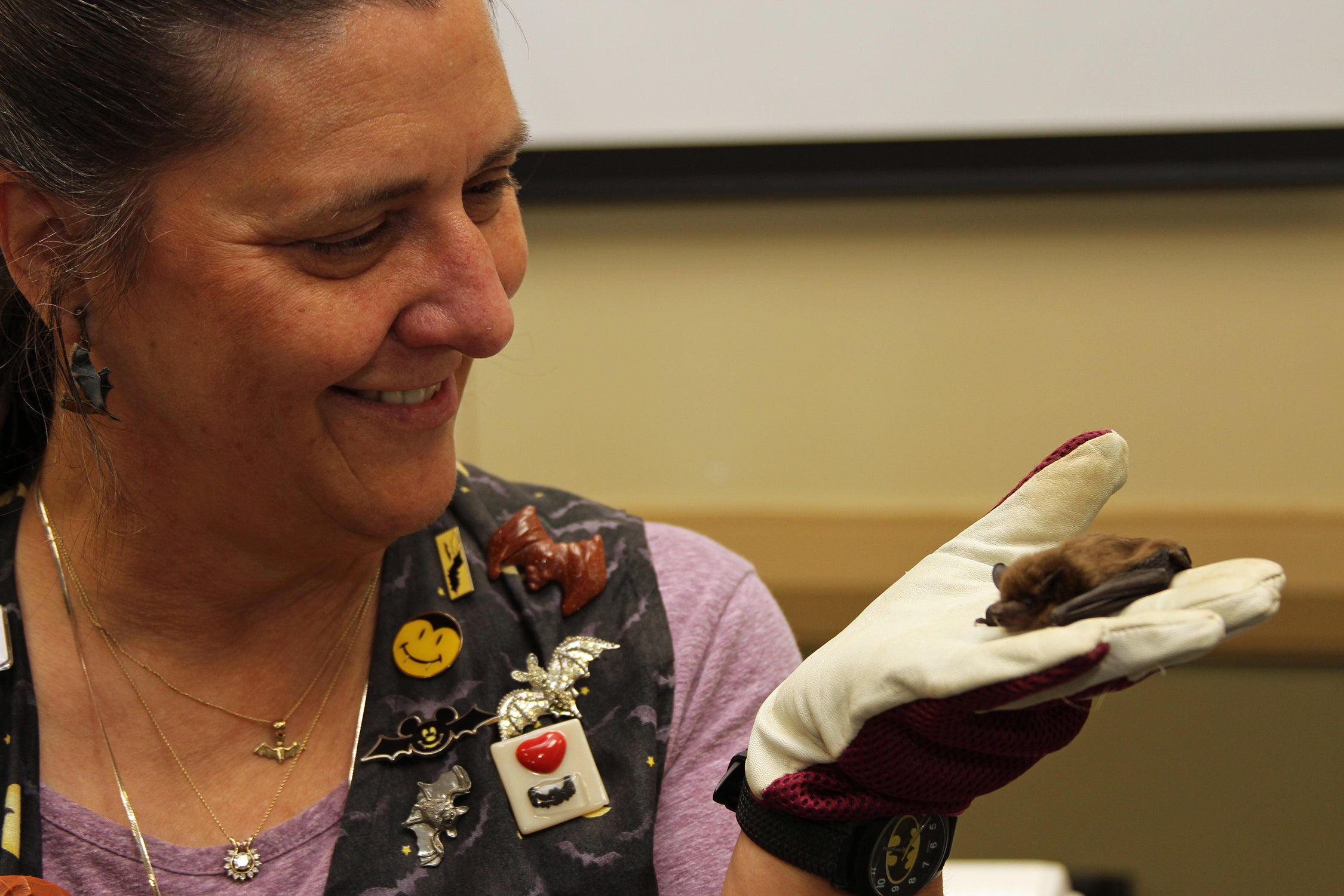By DAVID RAINER, Alabama Department of Conservation and Natural Resources
Despite the stigma caused by countless Dracula movies, a dedicated group of naturalists continues to demonstrate its love for the animal with a face only a mother could love. Those enthusiasts express their devotion to the bat, nature’s only flying mammal, all the way down to the bat jewelry.
Bat lovers met recently at Lakepoint State Park near Eufaula for the annual Bat Blitz, a celebration of the small animal that can sometimes be spotted zooming around street lights at dusk, dining on a smorgasbord of insects.
Nick Sharp of the Alabama Wildlife and Freshwater Fisheries (WFF) Division said this year’s Blitz was a joint exercise for bat biologists and enthusiasts from Alabama and Georgia. The Blitz is a collaborative effort of all the Alabama Bat Working Group (ABWG) members. Jeff Baker from Alabama Power and Shannon Holbrook from U.S. Fish and Wildlife Service served as co-chairs of the Bat Blitz committee.
Alabama State Lands Division’s Jo Lewis said the recent gathering was the 17th annual meeting of the ABWG, an informal affiliation of bat biologists and enthusiasts from many state, federal and private agencies across the state. The group holds the Bat Blitz in different areas of the state each year to sample the bat populations in those areas with mist nets deployed at night.
“We’re looking for distribution information about what bats are in what areas of the state,” Lewis said. “We have 15 species of bats that are native to Alabama. Some only occur in the more southern portions of the state, and others only occur in the more northern portions of the state because of the different habitats in Alabama and our complex ecosystems.
“In the north part of the state, bats appear to be more numerous because of the karst geology with all the caves. In the south part of the state, we have a lot of bats, but they don’t congregate as much in caves. They’re referred to as forest bats. They roost in trees. They’re actually all around us, but we’re kind of oblivious to them. A little bat hanging in a tree snuggled up against a nook or branch, you’re never going to notice.”
The southeastern myotis is one bat species found in the south part of the state but not as often in the north. The Bat Blitz researchers found 16 southeastern myotis bats in a culvert on the first night of the event.
Another bat more common in the southern part of the state is the Mexican freetail. Sharp said the fast-flying bat is now most often found in attics because most of the large, hollow trees it historically used have been cut down.
A bat that is found in the northern part of the state but not the southern part is the northern longear, a protected species. Gray bats, also protected, are found in north Alabama. The most common species throughout the state is the big brown bat.
Currently, the biggest concern for the bat enthusiasts is the condition known as white nose syndrome, a fungal infection that has killed more than six million bats in North America.
“Nobody knows right now how white nose syndrome affects the tree bats,” Lewis said. “We’re hoping it doesn’t affect them because they don’t roost together as much and are less likely to spread the infection.
“We do have confirmed cases of white nose in most of the northern counties, as far south as Bibb County near Birmingham.”
Lewis said it is very difficult to determine how much the syndrome has affected the populations in north Alabama because of the labor-extensive requirements to do those studies.
“From personal observation in a cave that I’ve been monitoring for the past 10 years, it followed the classic series of events associated with the disease, and it truly decimated the population,” she said. “A tenth of the number of bats that used to be there are there now. I used to count hundreds of tri-colored bats in there. Now, we’re counting 30. It has definitely affected that bat population.”
Sharp said data from nine caves in north Alabama monitored from 2010 to 2017 indicate a reduction of tri-colored bats by 70 to 95 percent. He said counts at two Indiana bat hibernacula over that time period are down 95 percent.
Bats are predators and eat huge numbers of insects, which can be disease vectors. They eat mosquitoes, which can carry several diseases, including Zika. Some of the insects the bats are eating are pest species that damage crops in the state.
“Their simple presence can deter pest species from infesting crops,” Lewis said. “If you have bats working a field, you’re less likely to have insects that are going to eat the corn.”
Sharp said bats provide at least $3.7 billion in pest control service to agriculture annually in the U.S., according to a 2011 scientific study.








